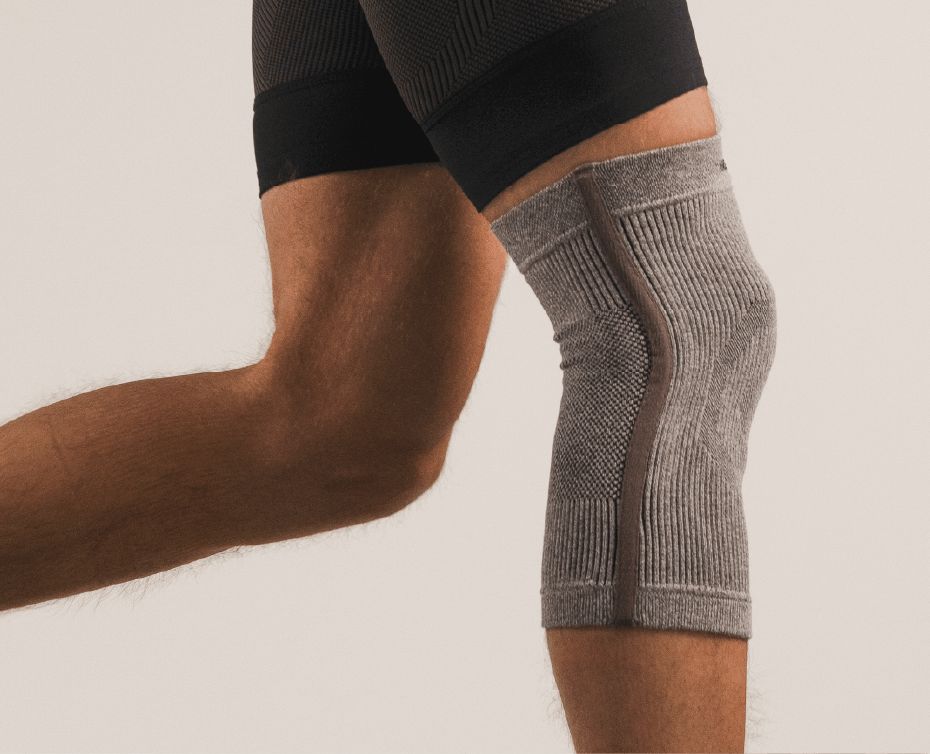When it comes to running, injury prevention is a critical component for a sustained and enjoyable experience. Runners often encounter common injuries that can impede progress and hinder the joy of the sport. From stress fractures to shin splints, the physical challenges runners face are diverse.
In this guide, we’ll explore the risks of running, strategies for injury prevention, and products that can aid in this effort, such as those offered by Incrediwear. From there, we’ll look at the role of medical professionals in injury prevention and how to tailor your running program to ensure your overall wellness.
What Are the Risks of Running?
Running, while a fulfilling pursuit, comes with inherent risks that every enthusiast should be mindful of. Understanding these risks is crucial for devising an effective strategy to minimize potential setbacks.
Overtraining
One prevalent risk factor is overtraining, a phenomenon where the body undergoes excessive stress without adequate recovery. Pushing your limits beyond what your body can sustain may lead to fatigue, decreased performance, and an increased likelihood of injuries.
Recognizing the signs of overtraining, such as persistent fatigue, declining performance, and disturbed sleep patterns, is essential for injury prevention.
Training Errors
Errors in your training routine can significantly elevate the risk of injuries. Especially prevalent in distance runners, training errors include sudden increases in mileage, intensity, or frequency without allowing the body sufficient time to adapt.
Understanding your body's limitations and gradually progressing in your training program is key to avoiding these errors.
Impact of Training Load and Weekly Mileage
The stress placed on your body during training, known as training load, directly influences injury risk. Monitoring and managing your weekly mileage is crucial, as an abrupt surge can overwhelm your musculoskeletal system. Striking a balance between challenging your limits and providing adequate recovery is vital for injury-free running.
Reading Bodily Signals
Knowing when to rest is paramount. Persistent soreness, decreased performance, increased irritability, and a heightened susceptibility to illness are indicators that your body needs a break. Listening to these signals and incorporating rest days into your routine is a proactive measure against potential injuries.
Navigating the risks associated with running requires a delicate balance between pushing boundaries and respecting the body's need for recovery. By understanding overtraining, training errors, and the impact of training load, you empower yourself to make informed decisions that foster a sustainable and injury-free running journey.
What Are Strategies for Injury Prevention?
Preventing running injuries involves a strategic approach that encompasses various key strategies. Integrating these into your running routine can significantly enhance your resilience and reduce the risk of setbacks.
1. Proper Warm-Up and Cool-Down Routines
Initiating your running session with an effective warm-up is fundamental. Dynamic stretches and light cardiovascular exercises prepare your muscles, joints, and cardiovascular system for the upcoming activity.
Equally crucial is a thorough cool-down, allowing your body to gradually return to its resting state and aiding in muscle recovery.
2. Focus on Strength Training
Incorporating strength training exercises into your regimen is a game-changer for injury prevention. Targeted exercises focusing on core strength, leg muscles, and stabilizing muscle groups contribute to overall body balance. Squats, lunges, and exercises using your body weight are particularly effective in building strength and resilience.
3. Address Imbalances Through Targeted Exercises
Identifying and rectifying muscular imbalances is paramount. Targeted exercises that focus on strengthening weaker muscle groups help maintain proper alignment and reduce stress on joints. This balance not only aids injury prevention but also enhances overall performance.
4. Lean Into Body Weight and Targeted Exercises
For beginners and seasoned runners alike, understanding the importance of body weight exercises in injury prevention is crucial. Incorporating exercises that utilize your body weight, such as squats and lunges, helps build strength without overstressing the body.
5. Try Cross-Training for Holistic Fitness
Diversifying your workout routine through cross-training contributes to a well-rounded fitness level. Engaging in activities like swimming, cycling, or strength-based workouts provides variety while giving certain muscle groups a break from the repetitive impact of running.
6. Use the Right Gear
Investing in proper gear is a cornerstone of injury prevention. Good running shoes provide essential support, ensuring proper alignment and cushioning against impact.
Additionally, incorporating wearable injury prevention products that enhance circulation can help reduce stress on key joints when needed. The Incrediwear knee support sleeve offers targeted relief to your knees, making it a valuable addition to your gear arsenal.
Embracing these strategies creates a strong foundation for injury prevention in your running journey. Remember, a holistic approach that encompasses warm-up rituals, strength training, addressing imbalances, incorporating body weight exercises, engaging in cross-training, and using the proper equipment will enhance your performance and safeguard you against the common pitfalls of running injuries.
How Can You Safeguard Against Overuse?
For a gratifying running journey, mitigating overuse injuries is paramount. Explore key strategies to shield against prevalent overuse issues and elevate your overall performance.
- Hamstring Health: Prioritize dynamic stretches and targeted strengthening exercises to foster hamstring flexibility, mitigating the risk of strains.
- Achilles Tendon Care: Gradual intensity increases, proper warm-ups, and calf muscle strengthening contribute to resilient Achilles tendons.
- Runner's Knee Management: Strengthen the quadriceps, enhance knee joint stability, and maintain mindful running form to tackle the challenge of runner's knee.
- Combat Plantar Fasciitis: Strengthen the plantar fascia and calf muscles, and wear supportive footwear with the right inserts to ward off plantar fasciitis discomfort.
- Holistic Training: Consider heart rate and range of motion and incorporate glute and ligament strengthening in well-rounded training sessions for comprehensive fitness and injury prevention.
Expert Guidance and Medical Support
In the pursuit of an injury-free running journey, seeking expert insights and medical support can be a game-changer. Collaborating with professionals in sports medicine and healthcare provides a valuable resource for injury prevention and overall well-being.
Consulting Medical Professionals
Engaging with medical professionals, such as physiotherapists and sports medicine practitioners, offers personalized guidance tailored to your unique needs.
These experts can assess your biomechanics, identify potential weaknesses, and provide targeted interventions to mitigate injury risks. Regular consultations can contribute significantly to long-term injury prevention strategies.
Involvement of Physical Therapists
Physical therapists play a pivotal role in injury prevention by addressing muscular imbalances, enhancing flexibility, and providing rehabilitation exercises. Incorporating their expertise into your routine, whether you're a seasoned runner or a beginner, can be instrumental in maintaining optimal physical health.
Remember that collaboration with experts and staying informed through reputable sources can be a proactive approach to injury prevention. By integrating professional guidance and accessing medical insights, you enhance your understanding of your body and fortify your resilience against running-related injuries.
Embracing an Injury-Free Running Journey
The keys to an injury-free running journey are intentional choices and a commitment to holistic well-being. Injury prevention is a dynamic process that requires ongoing attention to your body's signals and a thoughtful approach to training.
With a proactive mindset and a dedication to individualized strategies, you can stay away from the common pitfalls of running-related injuries.
Sources:
Suspected Mechanisms in the Cause of Overuse Running Injuries | NIH
A randomized controlled trial of hamstring stretching: comparison of four techniques | NIH
Patellofemoral Pain Syndrome (Runner's Knee) | Johns Hopkins Medicine
Read more

As pickleball has gained popularity in recent years, many people have wondered about the differences between pickleball and tennis. Although they are both racquet sports, understanding the nuances ...

Medically Reviewed By | Johannah Gregg, DNP FNP-C Ankle sprains are among the most common injuries for athletes and anyone who enjoys physical activity. The sharp pain that shoots up your ankle is ...






Leave a comment
All comments are moderated before being published.
This site is protected by hCaptcha and the hCaptcha Privacy Policy and Terms of Service apply.